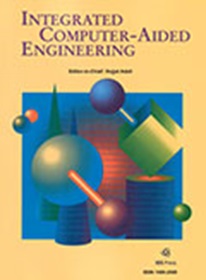移动机器人多阶段深度学习感知系统
IF 5.3
2区 计算机科学
Q1 COMPUTER SCIENCE, ARTIFICIAL INTELLIGENCE
引用次数: 17
摘要
提出了一种新型的移动机器人避碰多级感知系统。在这里考虑的场景中,移动机器人站在一个工作空间中,有一组潜在的目标要到达或与之交互。当人类同伴向目标做手势时,机器人必须规划一条无碰撞的轨迹以到达目标。为了解决这一问题,提出了一个由并行和处理阶段的连续卷积神经网络组成的全感知系统,根据期望目标生成无碰撞轨迹。该系统在实际环境中的每一步都进行了评估,并通过了多次性能测试,证明了该系统是一个适合实时应用的鲁棒、快速系统。本文章由计算机程序翻译,如有差异,请以英文原文为准。
Multi-stage deep learning perception system for mobile robots
This paper presents a novel multi-stage perception system for collision avoidance in mobile robots. In the here considered scenario, a mobile robot stands in a workspace with a set of potential targets to reach or interact with. When a human partner appears gesturing to the target, the robot must plan a collision-free trajectory to reach the goal. To solve this problem, a full-perception system composed of consecutive convolutional neural networks in parallel and processing stages is proposed for generating a collision-free trajectory according to the desired goal. This system is evaluated at each step in real environments and through several performance tests, proving to be a robust and fast system suitable for real-time applications.
求助全文
通过发布文献求助,成功后即可免费获取论文全文。
去求助
来源期刊

Integrated Computer-Aided Engineering
工程技术-工程:综合
CiteScore
9.90
自引率
21.50%
发文量
21
审稿时长
>12 weeks
期刊介绍:
Integrated Computer-Aided Engineering (ICAE) was founded in 1993. "Based on the premise that interdisciplinary thinking and synergistic collaboration of disciplines can solve complex problems, open new frontiers, and lead to true innovations and breakthroughs, the cornerstone of industrial competitiveness and advancement of the society" as noted in the inaugural issue of the journal.
The focus of ICAE is the integration of leading edge and emerging computer and information technologies for innovative solution of engineering problems. The journal fosters interdisciplinary research and presents a unique forum for innovative computer-aided engineering. It also publishes novel industrial applications of CAE, thus helping to bring new computational paradigms from research labs and classrooms to reality. Areas covered by the journal include (but are not limited to) artificial intelligence, advanced signal processing, biologically inspired computing, cognitive modeling, concurrent engineering, database management, distributed computing, evolutionary computing, fuzzy logic, genetic algorithms, geometric modeling, intelligent and adaptive systems, internet-based technologies, knowledge discovery and engineering, machine learning, mechatronics, mobile computing, multimedia technologies, networking, neural network computing, object-oriented systems, optimization and search, parallel processing, robotics virtual reality, and visualization techniques.
 求助内容:
求助内容: 应助结果提醒方式:
应助结果提醒方式:


